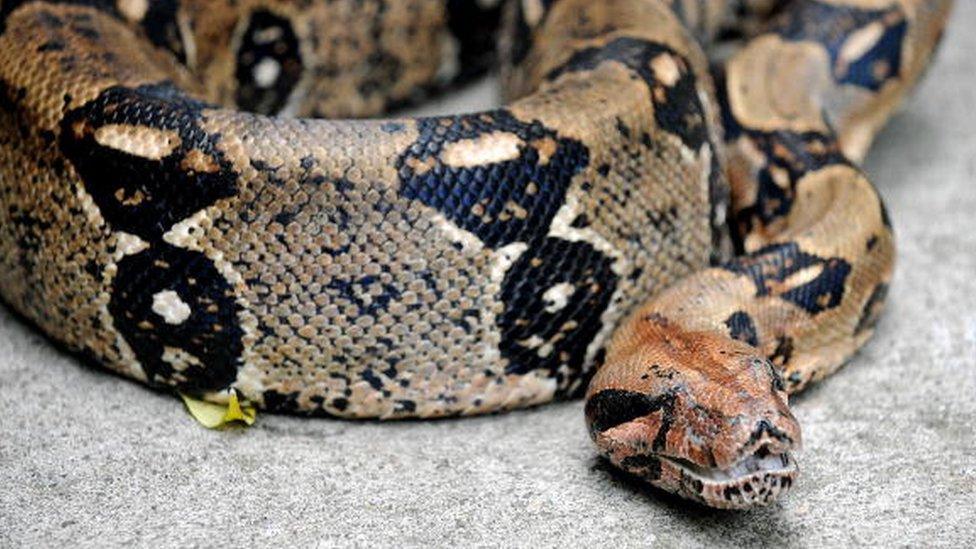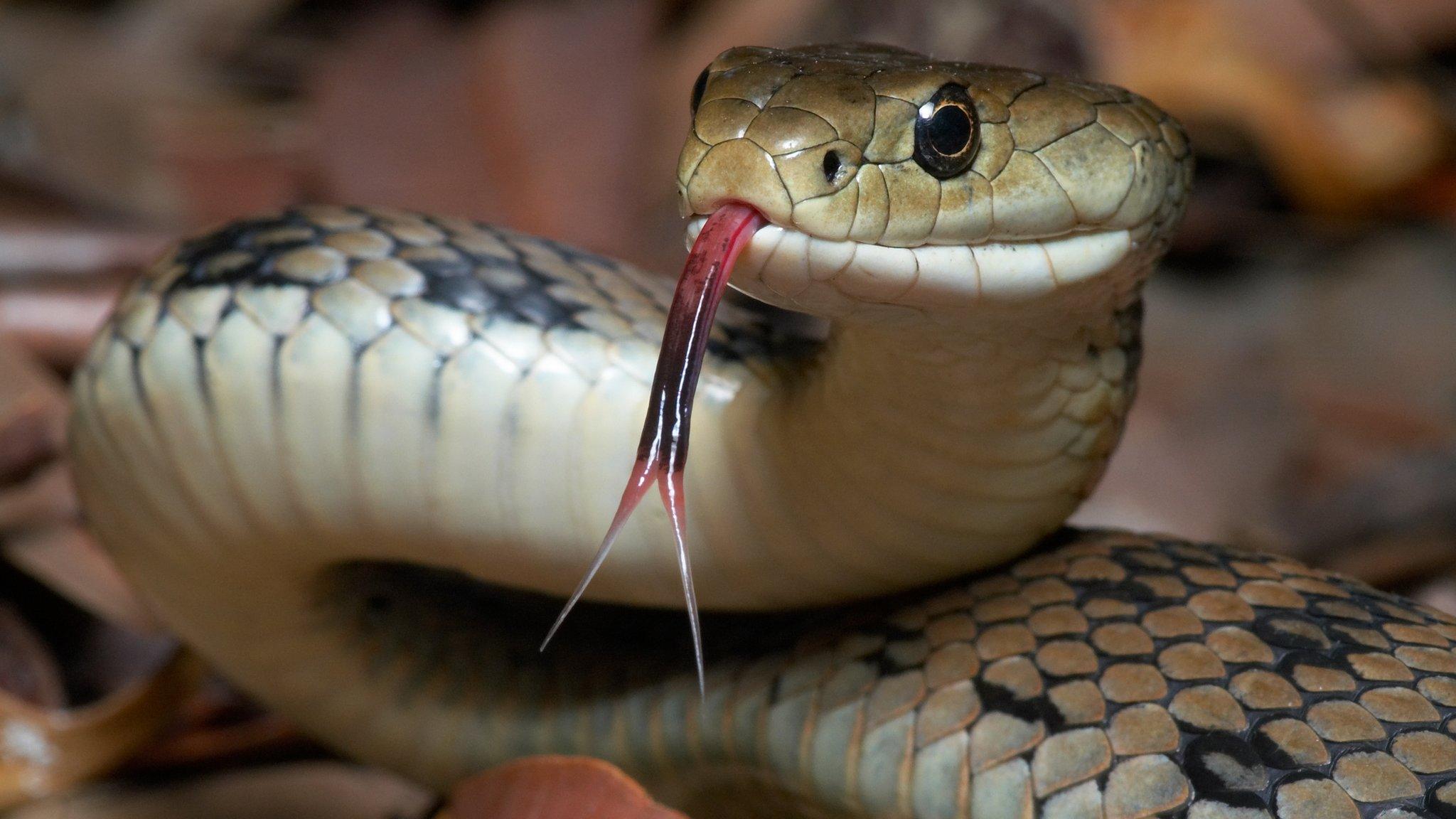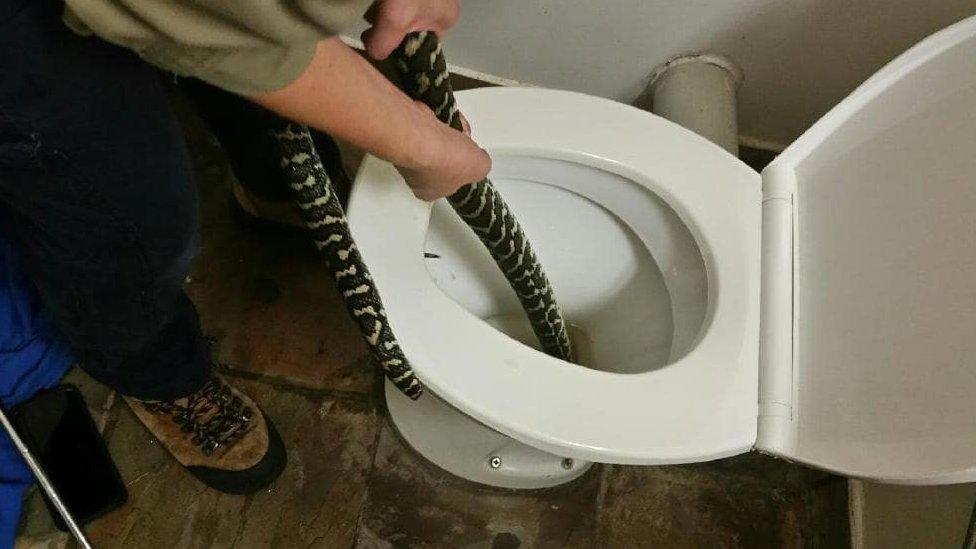Australia town scales up search for stray boa constrictor
- Published

The snake's "freshly shed" skin was found hanging from wooden planks at a building site
A search is under way to find a boa constrictor snake believed to be "at large" in a suburb of Sydney, Australia.
The skin of the 2.5m-long (8.2ft) snake was found at a building site in the town of Silverdale in New South Wales.
A professional snake handler was called on 4 October to inspect the skin, found hanging from wooden planks.
The snake, an invasive species originating from South America, could be dangerous to children and pets.
It is illegal to keep boa constrictors, non-venomous snakes which use their hooked teeth to trap and suffocate prey, outside of zoos in Australia.
Allow Facebook content?
This article contains content provided by Facebook. We ask for your permission before anything is loaded, as they may be using cookies and other technologies. You may want to read Meta’s Facebook cookie policy, external and privacy policy, external before accepting. To view this content choose ‘accept and continue’.

The local government in New South Wales has warned residents of an "adult boa constrictor at large" in the Cascades area of Silverdale.
In a letter, the government said it was "in the process of trying to locate and capture the animal and is requesting that residents be on the lookout for it and to report any sightings".
Sean Cade, of Australian Snake Catchers, said he was called to the building site by a concerned homeowner, but was unable to locate the reptile.

Boa constrictors, like the one pictured here, are one of the world's largest snakes, with an average length of 3m
Speaking to the BBC, Mr Cade, 48, said the snake - which can devour prey "four times the size of its stomach" - poses a potential threat to children and pets in the area.
"This thing would take a full-sized kangaroo mate, no problem," Mr Cade said. "The fear is that a young kid will be playing in the back yard, and this snake will mosey on up."
One theory, Mr Cade said, was that the snake had escaped from its enclosure, which may have been left open.
"It's definitely dangerous to animals, particularly dogs or cats," Mr Cade said.
Allow Facebook content?
This article contains content provided by Facebook. We ask for your permission before anything is loaded, as they may be using cookies and other technologies. You may want to read Meta’s Facebook cookie policy, external and privacy policy, external before accepting. To view this content choose ‘accept and continue’.

"What happens with these snakes is that they are fed rabbits and guinea pigs. So if people have rabbits and guinea pigs as pets in their backyards, the snake is going to be looking for that."
Mr Cade said the snake had "more than likely been bred in Australia" and kept as an illegal pet.
Boa constrictors are considered to be one of the world's largest snakes, with an average length of around 3m and weight of 10-15kg (22-33lb).
The species originates from Central and South America, including northern Mexico and north-western Argentina.

You may also be interested in:
'I found a missing 9ft python in my tree'

- Published21 January 2019

- Published25 January 2019

- Published8 April 2019
